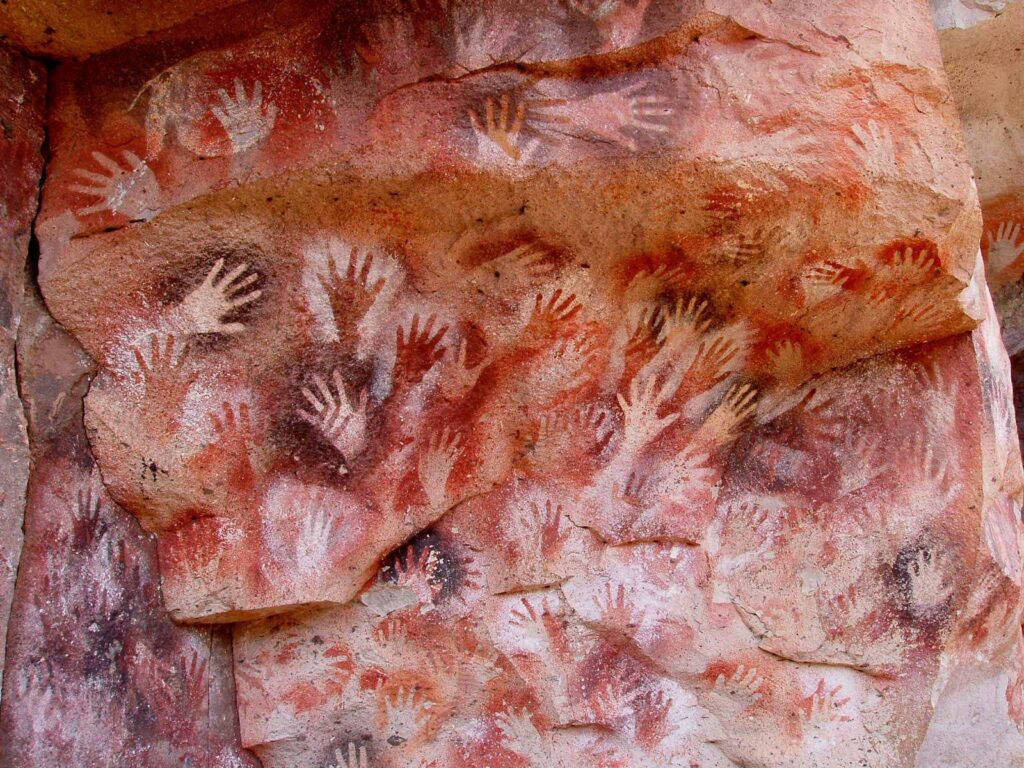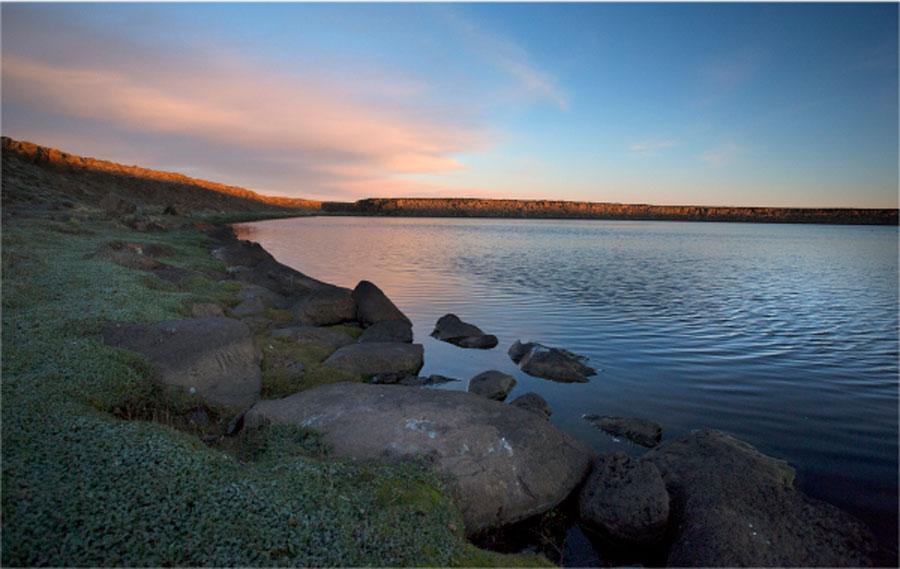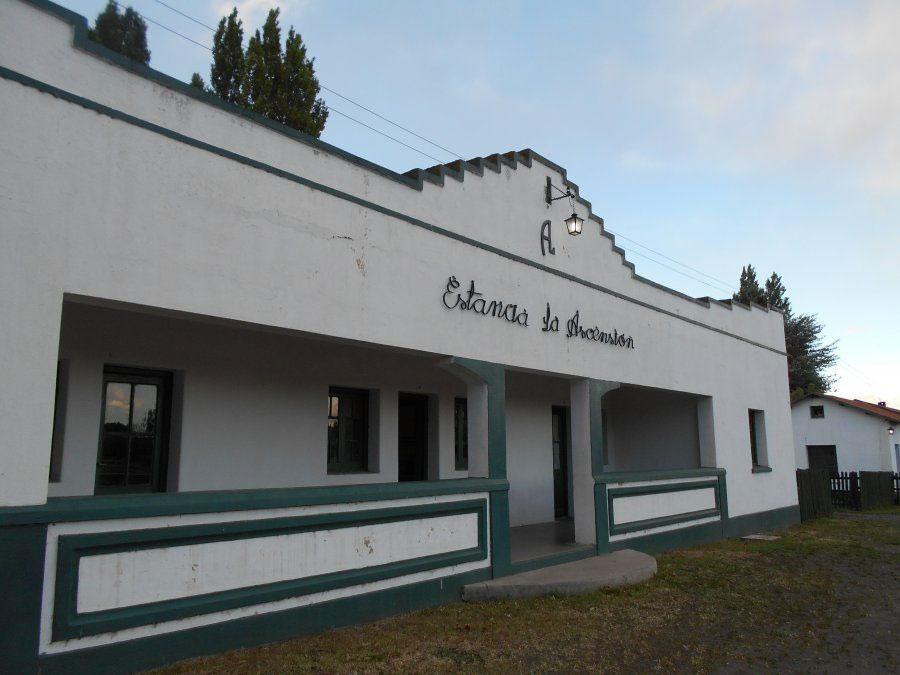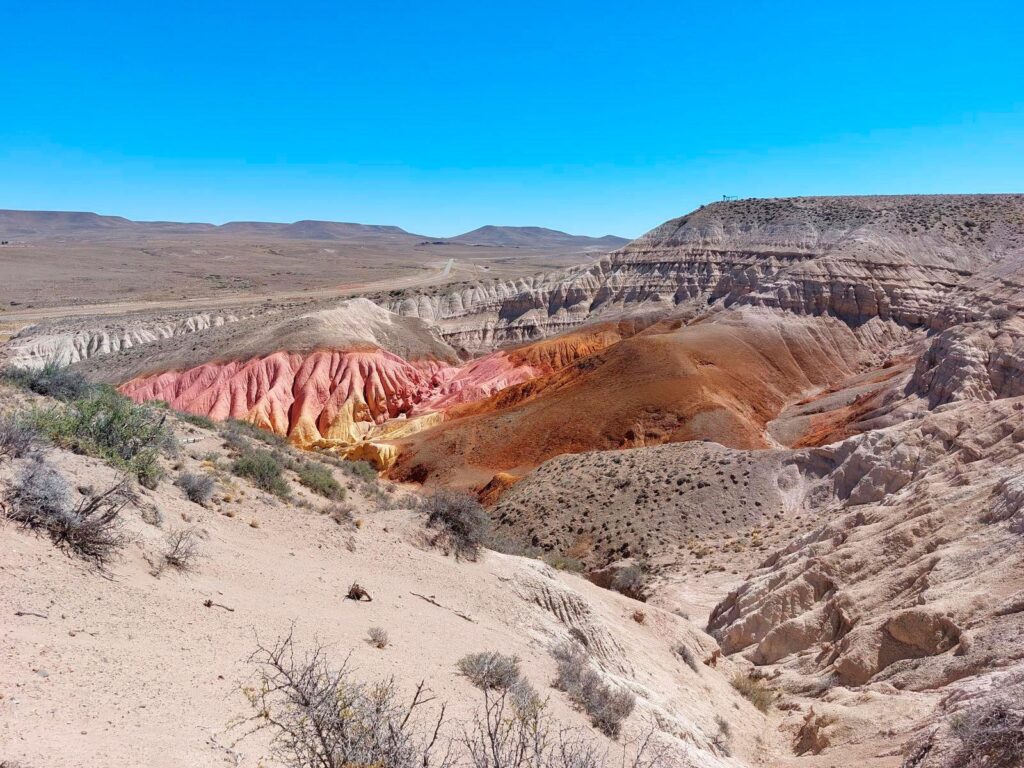Content
- 1 Introduction to the Patagonia National Park (Argentina)
- 2 Biodiversity: Flora, Fauna, and Present Ecosystems
- 3 Recommended Attractions and Excursions
- 4 Practical Guide to Visiting Patagonia National Park in Argentina
- 5 Cultural and Social Aspects of the Patagonian Region
- 6 The Future of the National Park
- 7 Photo Gallery
The Patagonia National Park in Argentina (in Spanish: Parque Nacional Patagonia) is a marvel of nature that never ceases to amaze visitors with its mighty biodiversity and surreal landscapes. This guide will take you on an exciting journey through this park, uncovering its attractions, rich wildlife and flora, and providing useful tips for your visit.
Introduction to the Patagonia National Park (Argentina)
Historical Background
The process of establishing the Patagonia National Park in Argentina began as a response to the concerns of Los Antiguos residents, who wished to protect the watershed of Lake Buenos Aires from potential gold mining projects. Simultaneously, organizations like Aves Argentinas and Ambiente Sur were conducting surveys of the hooded grebe, a bird endemic to the region, and advocating for the creation of a national park in key areas for its survival.
In 2007, technical teams from the National Parks Administration, with support from the aforementioned organizations and the Rewilding Argentina Foundation, identified public lands on the plateau of Lake Buenos Aires that hosted important habitats for the hooded grebe.
In 2009, the Rewilding Argentina Foundation acquired and donated the El Sauco establishment, which became a vital refuge for the nesting of the hooded grebe. The following year, the province of Santa Cruz transferred jurisdiction and ownership of the lands to the National Government, and thus, in 2014, the Patagonia National Park was established by law.
In 2012, intensive restoration and infrastructure development work began at the La Ascensión Gateway, which was previously a cattle ranch. In December of the same year, the gateway was opened to the public.
In 2017, the Rewilding Argentina Foundation donated lands to the National Parks Administration for the creation of the La Ascensión Wild National Reserve. This publicly accessible and free reserve features 40 km of trails that lead to unique places such as Lake Buenos Aires and the homonymous plateau.
In 2019, the Cañadón Pinturas Gateway was inaugurated, another publicly accessible and free entry point that offers trails to explore landscapes and wildlife, including the renowned archaeological site of the Cueva de las manos (The Cave of the Hands), recognized as a World Heritage Site.
During the same year, thanks to the efforts of the Rewilding Argentina Foundation in collaboration with the Freyja Foundation, the Cañadón Pinturas Gateway was enriched with an additional 40 km of trails, and the recovery of eight species through rewilding was initiated. Additionally, the construction of the Elsa Rosenvasser Feher Interpretation and Planetarium Center began.
These achievements reflect an ongoing process of conservation, restoration, and development of the protected area, in which different organizations and entities have worked together to safeguard this valuable natural environment and promote its appreciation and public enjoyment.
History of the Creation of the National Park
The process of establishing the protected area of the Patagonia National Park underwent several important stages. First, on March 14, 2013, the legislature of the Santa Cruz province unanimously approved Law No. 3306, which transferred jurisdiction and ownership of public and private lands to the National Government in order to create a national park. This bill was presented and promoted by provincial deputy Oscar Sandoval from Los Antiguos. The total area transferred by the province included 18,000 hectares of public lands, to which more than 35,000 hectares of private ownership were added, which would be donated to the National Parks Administration. The law was partially enacted through Decree No. 346/2013 on April 12, 2013.
The transfer of ownership and jurisdiction encompassed two sectors, one of them being the Laguna del Sello and its surroundings. The transfer of jurisdiction only included a total of 34,011 hectares corresponding to the El Sauco ranch, which was privately owned.
Subsequently, National Law No. 27081 was enacted on December 16, 2014, and promulgated on January 21, 2015, through Decree No. 69/2015. This law accepted the transfer of ownership and jurisdiction made by the Santa Cruz province and officially created the Patagonia National Park.
On May 8, 2017, the Rewilding Argentina Foundation completed the donation of the El Sauco ranch to the National Parks Administration, which they had acquired in 2012. This donation meant that the National Parks Administration obtained ownership of the ranch, in addition to the jurisdiction it already had as part of the park’s creation.
These steps were fundamental in establishing and consolidating the Patagonia National Park, ensuring the protection and conservation of this valuable natural heritage for present and future generations.
Expansion Project of the Protected Area
The Rewilding Argentina Foundation has carried out a significant expansion project for the Patagonia National Park. On November 4, 2015, they acquired the 24,000 hectares of the Los Toldos Ranch, where the famous Cave of the Hands is located, declared a World Heritage Site in 1999. Additionally, in the same year, they obtained the 20,000 hectares of the La Ascensión Ranch, located near Lake Buenos Aires. These two ranches are part of the expansion project, although they are not contiguous to it. Their inclusion in the park will require laws at both the provincial and national levels.
On September 19, 2018, the national Executive Power issued Decree No. 838/2018, creating the Patagonia Wild Natural Reserve. This decision was made after the board of the National Parks Administration accepted, through Resolution No. 298 of June 14, 2018, the donation with conditions made by the Rewilding Argentina Foundation and the Parque Patagonia Trust. This donation consisted of three ranches: Veranada de Estancia Laurak Bat (9,278 hectares), Establecimiento Ganadero La Tapera (5,613 hectares), and Establecimiento Ganadero El Sauce (12,817 hectares). Although the National Government already has ownership of these lands, laws for transferring jurisdiction will be required from both the Santa Cruz province and the national government for their inclusion in the National Park, which will be managed by the reserve. The Veranada de Estancia Laurak Bat and La Tapera ranches are contiguous to the two sectors into which the national park is currently divided, thus achieving territorial continuity.
The Rewilding Argentina Foundation is currently in the process of expanding the Patagonia National Park. However, this project has faced opposition from agricultural producers in Santa Cruz, who have managed to block the approval of the jurisdiction transfer law in the provincial Legislature. Despite these obstacles, the Foundation continues to work towards expanding and strengthening this important conservation area.
Geographical Location
Located in the province of Santa Cruz, part of the southern sector of the Buenos Aires Lake department and near the northern sector of the Río Chico department in the Argentine Republic, this park is an accessible destination from several major cities. It can be reached by plane, bus, or car, depending on your starting point. It can be geographically located using the coordinates: 47°09′33″S 71°19′01″W / -47.159166666667, -71.316944444444.
Climate of the Patagonia National Park
A temperate-cold climate predominates, characterized by scarce precipitation, strong winds, and the presence of frost throughout the year. This type of climate is typical of the Patagonian region of Argentina.
Temperatures in the park can vary considerably throughout the year. During the warmer months, which span spring and summer (from November to February), daytime temperatures usually range from 15°C to 25°C, although occasionally they can reach higher values. During the night, temperatures drop and can go below 10°C.
In contrast, during the colder months, corresponding to autumn and winter (from March to August), average daytime temperatures are between 5°C and 10°C. During the night and in the early morning hours, temperatures often drop below 0°C, leading to frequent frosts.
Regarding precipitation, the region experiences marked aridity. Rainfall is scarce throughout the year, with uneven distribution, and snow may occur occasionally during the colder months. Strong winds are another distinctive element of the Patagonian climate, with gusts that can blow in any season.
Biodiversity: Flora, Fauna, and Present Ecosystems
Iconic Species
The hooded grebe (Podiceps gallardoi) is the emblem of the Patagonia National Park. This beautiful diving bird was discovered in 1974 and is exclusively found in the Santa Cruz province.
During winter, the hooded grebe is found in few places on the coastal areas, such as the mouth of the Santa Cruz River. However, throughout the rest of the year, it migrates to the lagoons located on the plateaus of western Santa Cruz. There, after a notable courtship, the male and female build a nest using aquatic plants. They usually lay two eggs, although only one tends to thrive.
Hooded grebe populations are critically endangered, making the Patagonia National Park a key site for its conservation. The protection and preservation of this park are essential to ensure the survival of this unique and iconic species.
Unique Flora of the Region
The park is home to a diversity of unique flora, with endemic species such as the Pellín Oak and the Cordilleran Cypress, as well as species like Viola auricolor and Moschopsis ameghinoi, and plants of the Calceolaria genus. These species are endemic to the area and contribute to the park’s unique biodiversity.
Representative Fauna
The hooded grebe (Podiceps gallardoi) is one of the most charismatic and emblematic animals in the park. This diving bird species is exclusive to the Santa Cruz province, and the park plays a crucial role in its conservation by providing vital habitat for its survival. Other species inhabiting the protected area of Patagonia include lizards like Liolaemus archephorus, Liolaemus silvanae, and Liolaemus avilae, as well as a diverse array of mammals such as the southern guanaco, Patagonian puma, Geoffroy’s cat, lesser grison, culpeo fox, striped hog-nosed skunk, lesser grison, Patagonian mara, and others.
Birds are also prominent in this park, and the area has been declared an IBA (Important Bird and Biodiversity Area) by BirdLife International. The symbol of the park is the hooded grebe, a bird species that has been declared a Provincial Natural Monument. With only 400 remaining breeding pairs worldwide, this bird is found exclusively in the plateaus of western Santa Cruz.
Distinctive Park Ecosystems
From the Andean-Patagonian forests to wetlands, the park has a variety of ecosystems, each with its own unique biodiversity.
Recommended Attractions and Excursions
Hiking and Trekking: Popular Routes
The Patagonia National Park offers numerous hiking and trekking routes that traverse stunning landscapes and provide unparalleled opportunities to observe local fauna and flora.
Bird and Wildlife Observation
For nature enthusiasts, observing birds and wildlife in their natural habitat is an exciting experience that can be enjoyed differently with each visit.
Nature Photography and Landscapes
It’s a paradise for photographers, with its breathtaking scenery and wildlife, providing a multitude of opportunities to capture natural beauty through the lens.
Practical Guide to Visiting Patagonia National Park in Argentina
Best Times to Visit
The park can be visited year-round, but each season offers a unique experience, with spring and summer being the most popular.
Park Rules and Regulations
To ensure the conservation of this natural treasure, it’s important to respect all rules and regulations set by the park administration.
Preparation and What to Bring
Depending on the season and planned activities, visitors should adequately prepare and bring the necessary equipment for their visit to the Patagonia National Park.
Camping and Accommodation in the Park
For those seeking a more intimate experience with nature, the park offers various camping and accommodation options.
Contact Information
- Address: Terminal de Ómnibus de Los Antiguos: Av. Tehuelches Nº 157, Los Antiguos (9041), Santa Cruz.
- Phone: +54 9 2966 62-2852.
Local Communities and Their Relationship with the Park
Local communities have played a fundamental role in the conservation of the park and have developed a symbiotic relationship with it over the years.
The Park’s Role in Conservation and Local Economy
The park not only plays a crucial role in biodiversity conservation but also significantly contributes to the local economy through tourism.
Regional Cuisine
The Patagonian region is known for its unique cuisine, which is an additional attraction for park visitors.
The Future of the National Park
Current and Future Challenges: Climate Change and Human Pressures
The park faces several challenges, including climate change and human pressures, which require urgent measures to ensure its conservation.
Conservation and Restoration Projects
Several projects are underway to restore and conserve the Patagonia National Park, thus ensuring its beauty and biodiversity for future generations.
Current and Future Challenges: Climate Change and Human Pressures
The Patagonia National Park faces significant challenges, such as climate change and human pressures. These threats, if not addressed, could have a detrimental impact on the park’s unique biodiversity and natural beauty. It is crucial to take proactive measures to mitigate these effects and conserve this vital habitat for future generations.
Conservation and Restoration Projects
Various conservation and restoration projects are underway to protect and enhance the Patagonia National Park. These projects, carried out by governmental and non-governmental organizations, aim to maintain the health and diversity of the park’s ecosystems. These efforts are essential to ensure that it remains a place of beauty, discovery, and adventure for future generations.
Photo Gallery
- ONG Aves Argentinas (in Spanish).
- Ambiente Sur (in Spanish).
- Fundación Rewilding Argentina.
- Ley n.° 3306. Anexo a la Ley nº 3306 (Spanish pdf).
- Decreto 838/2018 (in Spanish)..
- Resolución Resolución nº 126/2011 (in Spanish).
- Unesco – Cueva de las manos.
- Portal Cañadón Pinturas (in Spanish).
- BirdLife Internacional.





